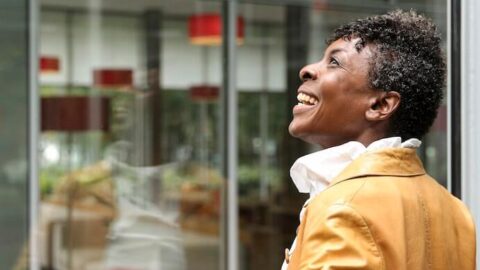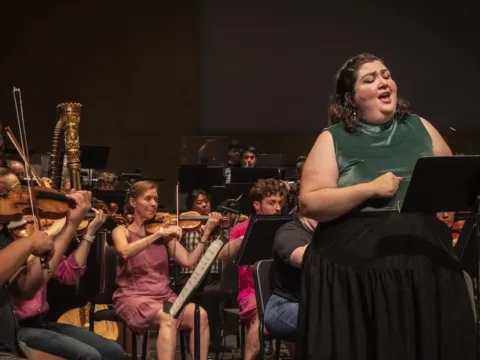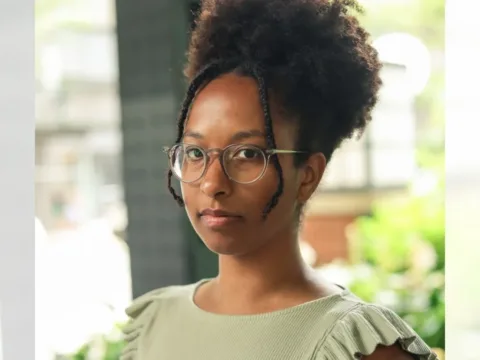“I woke up this morning thinking about planting seeds.” In her warm voice that exudes a characteristic je ne sais quoi, Helga Davis welcomed the audience at Boston’s Isabella Stewart Gardner Museum to a program titled “The City of Women” on February 17, 2019. The Gardner Museum resembles a 15th century Venetian palace and houses a massive collection of Renaissance art, but as this year’s Visiting Curator for the Performing Arts, Davis is bringing contemporary perspectives to historic narratives.
Davis crafted “The City of Women” as a response to the museum’s current Botticelli: Heroines + Heroes exhibit, which includes The Story of Lucretia and The Story of Virginia. The fates of these two women—Lucretia, raped by the son of the king and driven to suicide; Virginia, claimed as a slave by a judge and murdered by her father to restore her virtue—are upheld as turning points that overthrew tyrannical regimes and restored order, but what of Lucretia and Virginia’s pain? How can we rewrite these tales of martyrdom to center women’s experiences instead of the traumatic conditions surrounding their suffering?
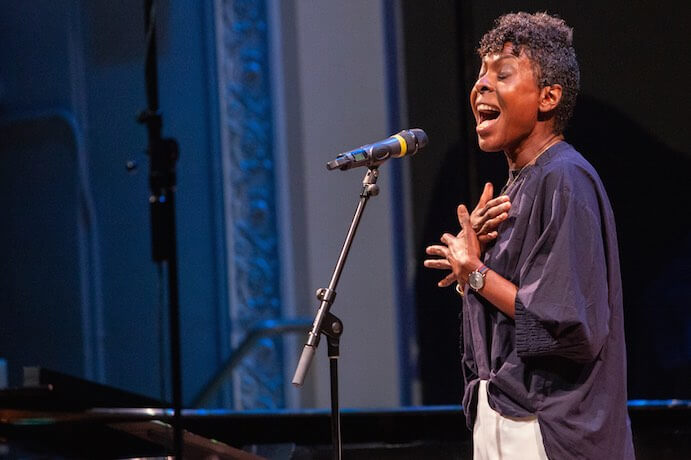
I still regularly think about Davis’ keynote address at the 2018 New Music Gathering, which challenged attendees to look around the room and see if their goals for inclusive community building had actually manifested. At the Gardner Museum, Davis tasked the audience with thinking about seeds: seeds sown in the works of Botticelli, seeds planted by our ancestors, and how those seeds have grown into deeply-rooted problems of inequality, discrimination, and hate. How, then, do we begin to address such foundational societal issues?
“We’re going to have to start planting better seeds.”
Davis seamlessly transitioned between host, interviewer, narrator, and performer with fierce insight and effortless grace as “The City of Women” unfolded in spoken word, dance, and song. First, Davis offered a reading of Mary Oliver’s “The Journey” accompanied by dancer Shellz, whose subtle rhythmic movements established an articulated flow that embodied the cadence of Davis’ voice. Next, Be Steadwell offered a contemporary rendering of Barbara Strozzi’s “Che si può fare” that channeled blackness and queerness into a 17th century love song. Establishing a ground bass through looping and beat boxing, Steadwell’s delivery of the Italian text ranged from velvety lyricism to floating gossamer.
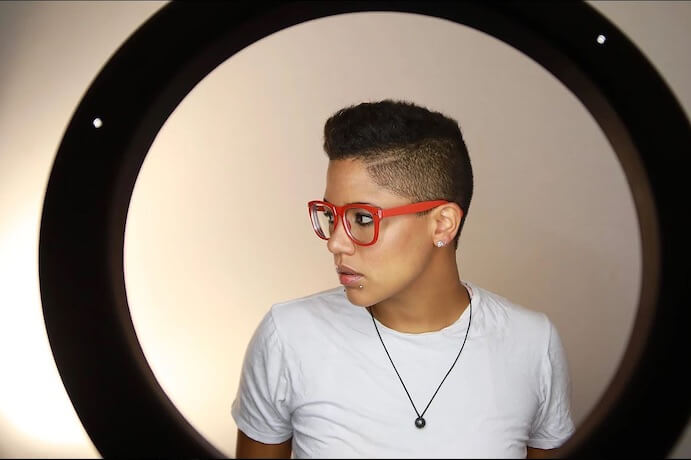
Boston-based poet and rapper Oompa took the stage to present the world premiere of On Lucretia. In spoken word bookended by a sung refrain, Oompa considered gender, violence, and survival in light of The Story of Lucretia. Reflecting on her upbringing as one of the boys, she deftly explored how she has been both an “arbiter and a victim of misogyny.”
Concluding the first half was Courtney Bryan’s Yet Unheard (in memory of Sandra Bland) featuring Davis as soloist. The powerful text by Sharan Strange gives voice to Bland’s experience as she considers the motivations that precipitated her arrest, reflects on her life, and calls on us to imagine a world that “centers black people” and “sees them in the future.” Over a bed of simultaneously strained and tender strings, Davis intoned her haunting first line—“What did he see that prompted such rage?” Emphatic recitative conveyed the struggle to contextualize police brutality, each line sung on an insistent single pitch, each line rising by a half step and growing in intensity. Then, plummeting to the bottom of Davis’ vocal range, the text shifted to a recollection of Bland’s three days in police custody, spoken and sung against the gentle roll of timpani and string tremolo. As the choir asked, “And what was the crime?” Davis’ unaccompanied answer cut to the core of this grave injustice: “I dared to resist society’s murderous design.” With Bryan’s score swelling to a dramatic call to action, Yet Unheard implores the audience, “Won’t you sing my name?”

Davis welcomed the audience back after intermission with an original poem on the subject of peace, though she perceptively noted that we often want to “jump to peace without doing the work.” Still, Davis’ text was poignant, humorous, intimate, and transparent, capturing the complexity of things that bring us comfort, joy, and relief.
Kim Baryluk’s “Warrior” welcomed the Handel and Haydn Society Young Women’s Chamber Choir to the stage. Baryluk’s empowering feminist anthem is set in rhythmic unison with radiant harmonies, and while it wasn’t the most innovative or challenging work on the program, “Warrior” has a clear message of womanly solidarity and served as an effective showpiece for the talented young choristers.
Gloria Coates’ “Illumination” from Transitions is a deconstructed version of “Dido’s Lament,” featuring a swirling sea of downward glissandi and lamenting lines from which melodic fragments of Purcell’s original aria eventually emerge. The performance was significantly enhanced by the inclusion of dancer Shellz, who flexed, snaked, and contorted herself through the ensemble.
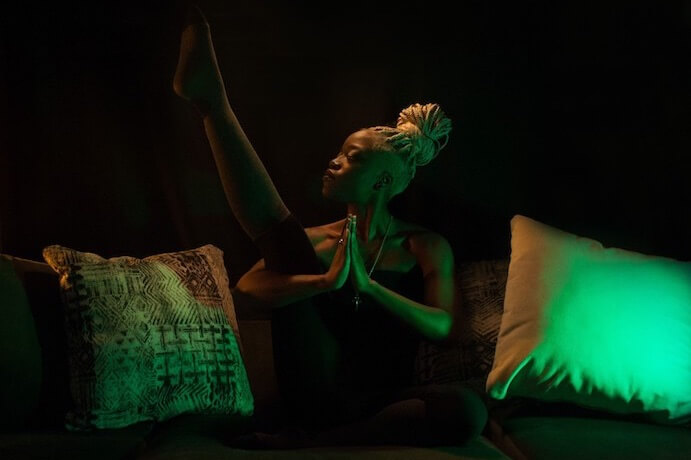
The program concluded on a decidedly hopeful note with Kate Whitley’s Speak Out, a setting of Malala Yousafzai’s 2013 address to the United Nations advocating for education for all, particularly young girls. Whitley’s work for orchestra, chorus, and youth chorus percolated with chugging optimism and perpetually ascending melodic lines, leaving the audience with the assertion that “Today is the day we speak out.”
“The City of Women” was one of the most striking, well-orchestrated events that I have attended in recent memory, largely due to the curatorial powers of Helga Davis. Davis excels at inviting people into a space, establishing a level of trust and comfort, then pushing the dialogue into challenging but necessary territories. All of the works on the program opened a door for conversation, but ultimately, it is up to audiences to transform that conversation into action outside of the concert hall. As a socially engaged artist, Davis succeeds because she hands people the tools to do the work—not the blueprint with the answers. After all, as she remarked at the opening, “It is not enough to send other people to plant our seeds.”
